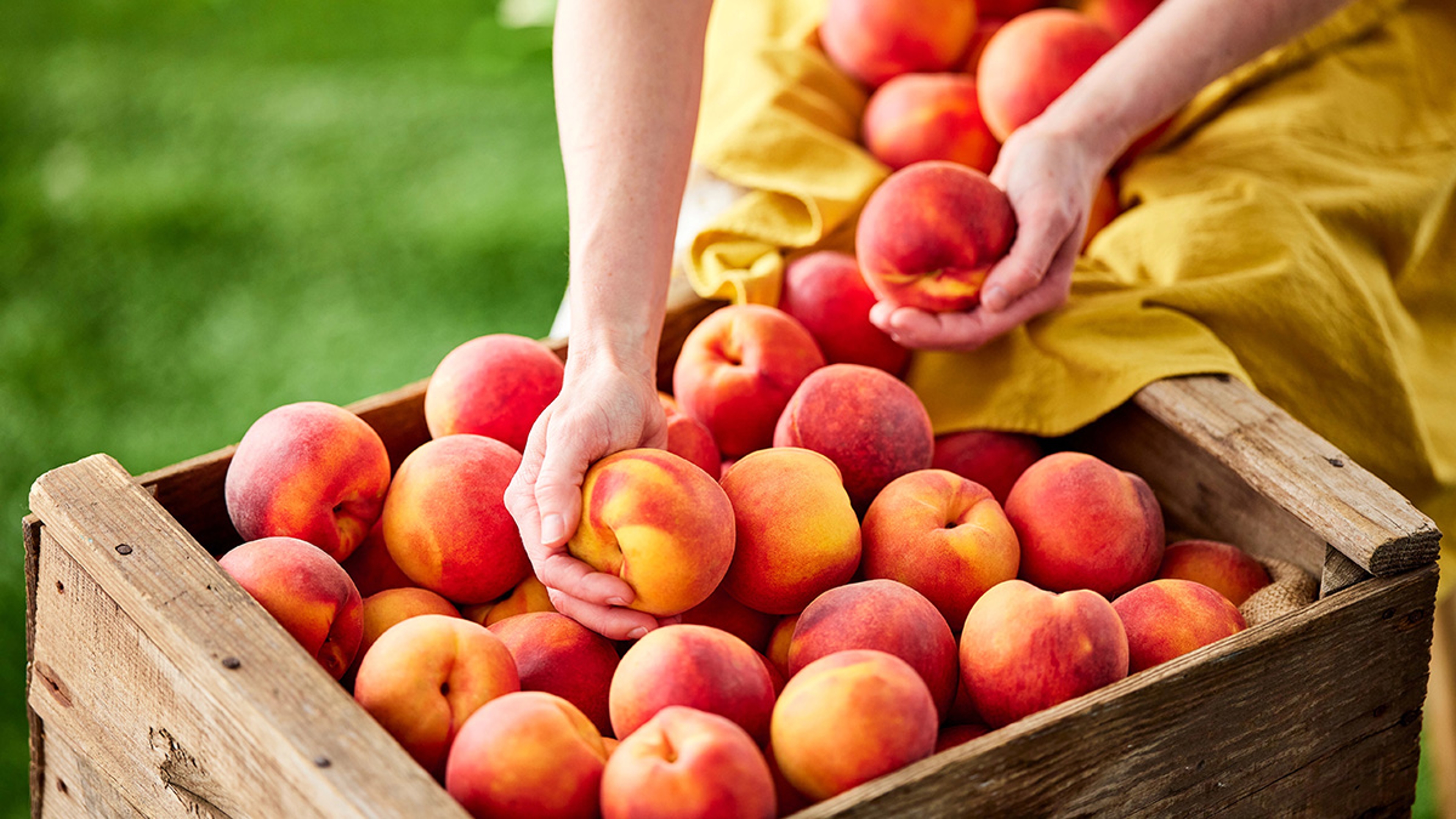March's Veg of the Month: Radishes
Disregard their bitterness. These root vegetables are totally rad!
Mar 02, 2024
Delicate spring radishes, such as red cherry bombs or elegant French breakfast radishes, appeal to our senses with a crisp, peppery sweetness that hooks you on the first bite. But, according to Farmer Lee Jones of The Chef's Garden, we shouldn't miss out on their seasonal counterpart: winter radishes.
"Wintertime gets slightly dull, and winter radishes bring life!" he exclaims, pointing out his favorite winter radish varietals. "The watermelon radish has a brilliant red center to it that is striking, and then you have bright lime radishes, ninja radishes with their white flesh, and the black radish, with a black skin and white flesh. Each gives us excitement this time of year."
What's the difference between spring and winter radishes?
Farmer Lee joyfully explains the differences between these two types of radishes: "The cells (of a winter radish) are more compact than a spring radish; the structure and body is more like that of a carrot when you bite into it," he says. "And it takes three to four months to grow winter radishes versus the three to five weeks it takes to harvest a spring radish. These are among the last crops we harvest, and they store so well."
Besides their larger size, dense textures, and "rad" colors, winter radish flavors range from mild, juicy, and sweet to hot and spicy. "And because winter radishes have a heartier texture, they're more versatile than spring radishes," Farmer Lee adds. "You can braise, roast, boil, eat them raw, and pickle them."
What makes The Chef's Garden winter radishes special?
The Chef's Garden mixed winter radishes contain a mix of white, green, red, purple, and black radishes that expands your vegetable repertoire and adds pops of color, crunch, and zippy flavor to dishes.
Radishes contain sulforaphane, which helps support our body's natural detoxification process and healthy hormone balance, as well as natural nitrates that support circulation. Chewing radishes slowly releases these natural compounds, allowing you to reap their nutritional benefits.
How to care for and store winter radishes
Look for unblemished roots and fresh-looking leaves. If the roots are sold loose, make sure they are plump and firm. For short-term storage, place uncleaned radish roots in a plastic bag (this helps lock in moisture) and refrigerate them in the crisper drawer. To store radish roots longer, place them in a sealable container lined with a damp cloth or paper towel, where they will stay fresh for several weeks. For roots with greens attached, remove the greens and store them separately. (If left intact, the greens will pull moisture from your radishes.) Store unwashed leaves separately in a plastic bag in the crisper drawer.
When ready to use radish leaves, wash them thoroughly before adding them raw to salads for peppery punch, or sauté them. You can also swap radish leaves for basil to create pesto. If the skin on winter radish roots is tough, peel it. Otherwise, you can enjoy radishes with their skin on.
How to use winter radishes
"I like to slice winter radishes on a mandolin or using a knife and cutting board, and do a quick radish pickle," Farmer Lee says delightfully. "They're a great snack beside your chair in the evening."
Tame spicier varieties, such as black radishes, by cooking them with plenty of fat, such as butter, to mellow their bite. Or soak raw, thinly sliced radishes in ice water for a few hours to lessen their bitterness.
Add the alluring color of watermelon radish — named for its red flesh and green rind — to stir-fries, salads, sandwiches, and tacos.
Roasting winter radishes brings out sweeter flavors. Treat them like other nutrient-dense seasonal root vegetables, such as carrots, candy cane beets, and turnips. For a winter treat, try a roasted root vegetable mélange, breakfast hash, or fried egg on toast with radishes.
.svg?q=70&width=384&auto=webp)

























